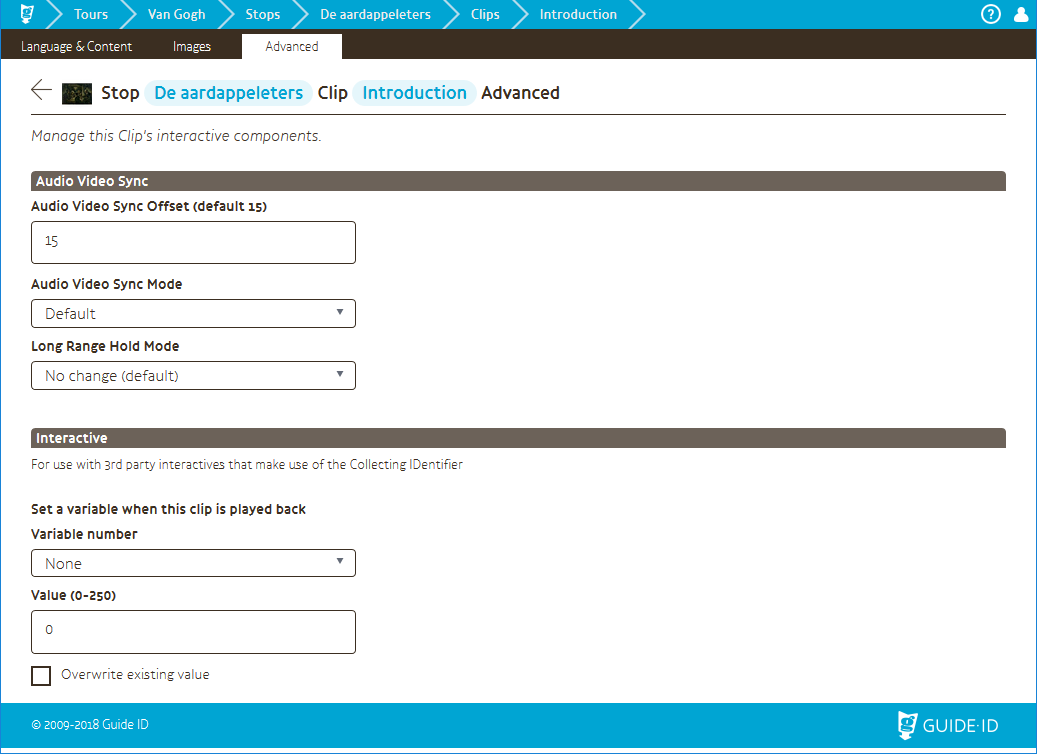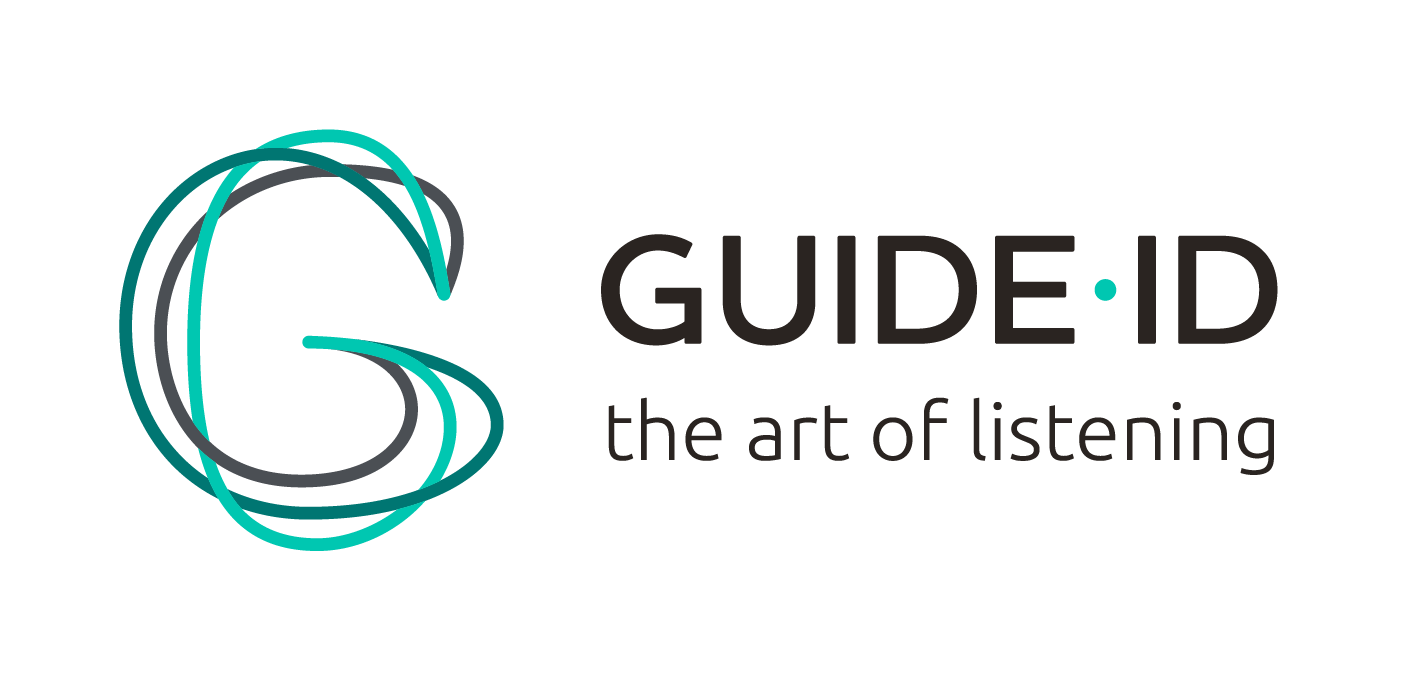Clips
A Stop exists of one or more clips, and within these clips you have several sections which you can edit:
Tab – Language & Content
This page is perhaps the most important one of them all, since this is where you can upload the actual audio.
Title (language neutral): The title of the clip is used in the clip editor & Analytics. It is also a fallback description for missing translated titles for this clip.
The translated titles and script texts for public viewing are not relevant for Podcatcher-only Stops. Only the Podcatcher App and MapMyVisit use this information.
 Language: You can select one of the languages available for the Tour in this drop-down menu. If there are two or more languages available, you will see two languages side-by-side.
Language: You can select one of the languages available for the Tour in this drop-down menu. If there are two or more languages available, you will see two languages side-by-side.
Title: Translated name of the Clip. If left empty, the language neutral title is used.
Script (for studio/voice): This text is used when exporting scripts. If the script for public viewing is left empty, this text shows up instead.
Script (for public viewing in App or MapMyVisit): This is the text that will be shown in the Podcatcher App and MapMyVisit. If it’s left empty, the script for studio/voice will be used instead.
Audio: The audio content for the Clip.
Upload audio…: Opens your browser’s file selection window. Only MP3 files are supported. This option is the manual alternative to the bulk audio upload as described in this article.
![]() : This icon is called a “drop zone”. Drag audio files from your desktop (or any other folder on your computer) to here to upload them.
: This icon is called a “drop zone”. Drag audio files from your desktop (or any other folder on your computer) to here to upload them.
![]() : Play the audio fragment. The gray bar represents the position in the clip. You can click this bar to jump to that position.
: Play the audio fragment. The gray bar represents the position in the clip. You can click this bar to jump to that position.
![]() : Download the original audio file.
: Download the original audio file.
![]() : Delete the audio content.
: Delete the audio content.

Tab – Images
Uploading of an image for this clip can be done here. These images are only used for the Podcatcher App. If no image is provided, the image of the Stop is used instead.
We recommend using images of 1080 x 1920 pixels (portrait) or larger.
Tab – Advanced
Advanced Clip options can be tweaked here.

Audio Video Sync
Offset: When a Podcatcher receives the AV-Sync IDentifier code, it also receives a time code for the video to skip to. By the time the Podcatcher has calculated where it should start playing, the video will have moved on. It will then skip this many audio frames to catch up again. You can try changing this value if the Podcatcher is frequently out of sync when playing AV-Sync Stops.
Audio Video Sync Mode: AV-Sync has three modes:
- Default: it behaves like an IDentifier, but with a time code.
- Long Range: the IDentifier part of the AV Sync IDentifier is replaced by a Long Range IDentifier, so a large area can be triggered at once.
- Interactive: this mode is not supported anymore, but is kept for backwards compatibility.
Long Range Hold Mode: If this is a Long Range AV-Sync Stop, you can select a mode. Normally when a Long Range IDentifier is received on the Podcatcher, it remembers the code so while it is still in range, it won’t trigger again. When we then point at any other IDentifier, the Podcatcher forgets about the Long Range IDentifier, this means that when the visitor gets back in range the Long Range IDentifier can be triggered once more. Sometimes you can’t escape a Long Range IDentifier but you also want to be able to aim at another IDentifier without the Long Range kicking back in (because it is still in range). That is what this option is for. If this option is enabled, the Podcatcher keeps remembering the Long Range IDentifier code so it won’t trigger even when pointing at a different IDentifier.
The options are:
- No change: don’t change the current setting.
- Enabled: Turn this behaviour on.
- Disabled: Turn this behaviour off.
Interactive
If your Tour uses interactives, the variable numbers and associated values can be set here. These will be set when the Podcatcher plays this Clip.
